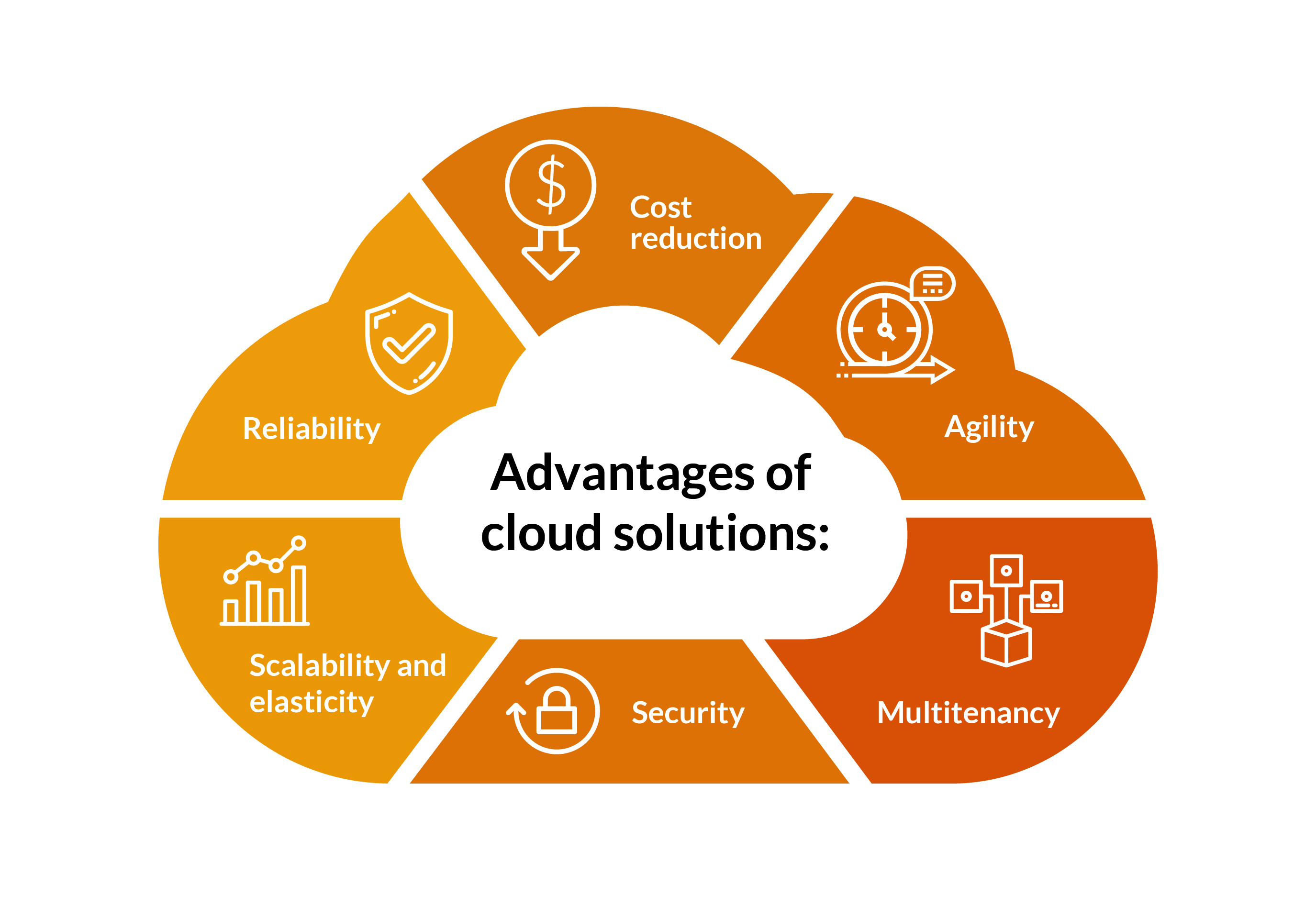Simplify Your Infrastructure With Cloud Solutions
As services browse the ever-evolving landscape of technology and information administration, the role of cloud services in streamlining facilities has become significantly prominent. Just how can businesses efficiently browse this transition and genuinely unlock the potential of cloud services for simplifying their infrastructure?
Benefits of Cloud Provider
Cloud services provide a streamlined technique to managing IT facilities, supplying businesses with cost-efficiency, scalability, and flexibility. One of the key advantages of cloud solutions is the scalability they offer.
In addition, cloud solutions remove the need for organizations to purchase pricey software and hardware. This cost-efficiency is a substantial advantage, specifically for tiny to medium-sized ventures aiming to minimize upfront prices. By utilizing cloud services, organizations can access premium IT resources without the significant price related to standard framework setups.
Additionally, cloud services provide organizations with the adaptability to access their information and applications from anywhere with a net connection. This degree of access boosts partnership among teams, makes it possible for remote work, and increases general efficiency. The flexibility offered by cloud services encourages organizations to adjust swiftly to changing market problems and customer needs.
Cost Savings and Scalability
In enhancement to the functional benefits highlighted previously, the combination of cloud solutions into a firm's infrastructure brings forth significant expense savings and improved scalability. Cloud services use a pay-as-you-go design, enabling organizations to scale sources up or down based on current requirements, thereby staying clear of the costs connected with preserving excess capability. This adaptability makes it possible for companies to adjust quickly to varying demands without sustaining unnecessary costs.
In addition, cloud solutions remove the requirement for in advance financial investments in equipment and software program, reducing capital investment. Overhead are additionally decreased as business no more need to take care of and maintain physical web servers, causing reduced energy consumption and IT staffing costs. In addition, cloud services supply automatic updates and upkeep, ensuring that the facilities continues to be safe and secure and up-to-date without calling for hand-operated treatments.
Boosted Safety And Security Actions
Implementing stringent safety measures is extremely important when incorporating cloud solutions right into a firm's facilities to protect delicate data and make certain compliance with market regulations. Cloud provider supply improved security functions such as data file encryption, firewall program security, and multi-factor verification to reduce cybersecurity risks. Security assists protect data both at rest and en route, making certain that only authorized users can access sensitive information. Firewall softwares work as a barrier between exterior hazards and inner networks, monitoring and regulating outward bound and inbound network website traffic. Multi-factor authentication includes an additional layer of safety and security by calling for users to give several forms of confirmation prior to accessing the cloud solutions.
In addition, regular safety audits and compliance assessments assist guarantee and recognize vulnerabilities adherence to market criteria. Business can also gain from functions like automated safety updates and real-time hazard surveillance given by cloud company. By focusing on security actions and remaining aggressive in addressing potential risks, companies can confidently take advantage of cloud solutions while protecting their important data from unapproved access or violations.
Transitioning to Cloud Facilities
To effectively incorporate cloud services right into a business's framework, a structured method that deals with the change towards cloud-based remedies is crucial. Transitioning to shadow facilities includes careful preparation and execution to make sure a smooth movement process - linkdaddy cloud services.
When the assessment is full, a migration strategy should be developed. This strategy ought to outline the timeline, resources, and obligations for relocating each component to the cloud. It is necessary to interact this plan plainly to all stakeholders to ensure placement and lessen disturbances during the change.
Throughout the movement monitoring, procedure and testing are crucial to recognize and resolve any kind of issues promptly. Routine checkpoints should be established to track progression and make essential adjustments. Additionally, training for staff members on using cloud services should be provided to guarantee a successful transition and make best use of the benefits of the new infrastructure.
Ideal Practices for Cloud Adoption
Successful fostering of cloud solutions hinges on the tactical alignment of service goals with technological abilities and business these details readiness. To guarantee a smooth transition to the cloud, organizations need to start by carrying out a thorough assessment of their present facilities and determining which work are best fit for cloud migration. It is vital to entail crucial stakeholders from different departments in the decision-making process to gain buy-in and deal with any kind of issues early on.
An additional ideal technique for cloud fostering is to focus on protection and conformity. Organizations has to thoroughly examine the protection steps used by cloud company and make sure that their information is safeguarded according to industry criteria and governing requirements. Implementing durable information encryption, access controls, and routine security audits can aid mitigate threats linked with cloud fostering.

Final Thought

As companies browse the ever-evolving landscape of modern technology and information management, the duty of cloud solutions in simplifying facilities has become increasingly noticeable - universal cloud Service. Exactly how can businesses successfully browse this shift and absolutely open the possibility of cloud services for streamlining their framework?
Cloud solutions supply a structured strategy to handling IT facilities, providing organizations with cost-efficiency, flexibility, and scalability. By using cloud services, services can access high-grade IT sources without the hefty rate tag associated with traditional infrastructure setups.
To make sure a smooth shift to the cloud, organizations must start go to this website by performing a thorough assessment of their existing framework and determining which workloads are best suited for cloud movement.